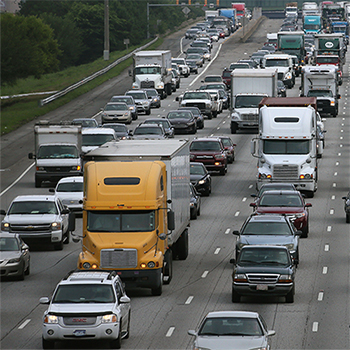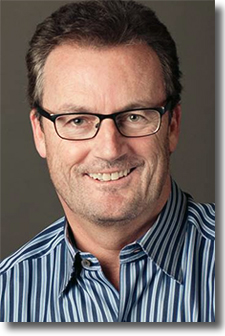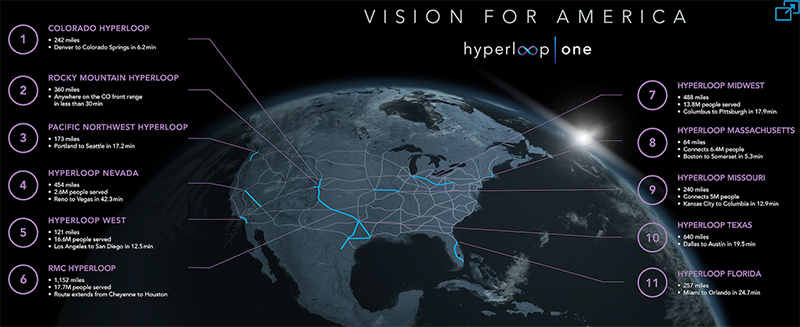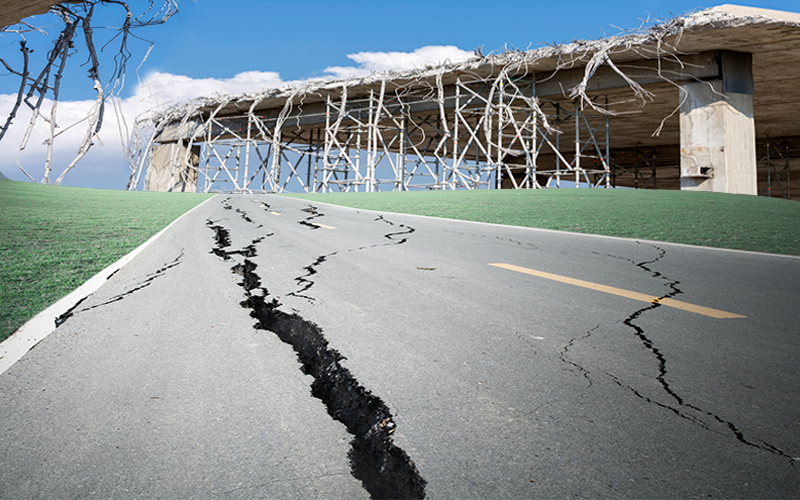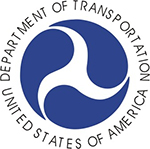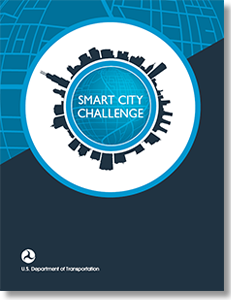Hyperloop One Unveils its Transportation Vision for America, Details 11 Routes and Global Challenge
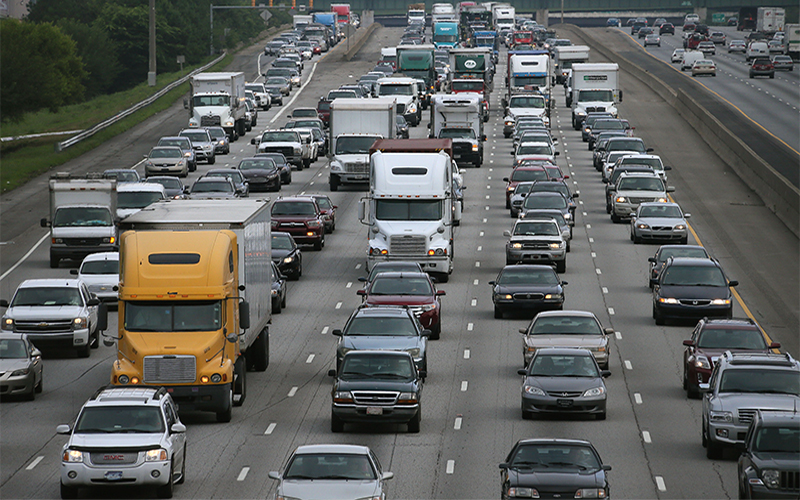
Executives from Hyperloop One joined leading policymakers and transportation experts to reveal details of select Hyperloop routes in the United States and to initiate a nationwide conversation about the future of American transportation.
Of more than 2,600 participants in the Hyperloop One Global Challenge, 11 teams presented routes, linking 35 cities and covering more than 2,800 miles.
They join 24 other teams from around the globe, each vying to be among 12 finalists.
Three eventual winners will work closely with Hyperloop One engineering and business development teams to explore project development and financing.
“Hyperloop One is the only company in the world building an operational commercial Hyperloop system,” said Rob Lloyd, chief executive officer of Hyperloop One.
“This disruptive technology - conceived, developed and built in the U.S. - will move passengers and cargo faster, cleaner and more efficiently. It will transform transportation as we know it and create a more connected world.”
Lloyd said that by year's end the company will have a team of 500 engineers, fabricators, scientists and other employees dedicated to bringing the technology to life.
Hyperloop One, he said, will enable broad benefits across communities and markets, support sustainable manufacturing and supply chains, ease strain on existing infrastructure and improve the way millions live and work.
With Hyperloop One, passengers and cargo are loaded into a pod, and accelerate gradually via electric propulsion through a low-pressure tube. The pod quickly lifts above the track using magnetic levitation and glides at airline speeds for long distances due to ultra-low aerodynamic drag.
This week, the company finalized the tube installation on its 1640-foot-long DevLoop, located in the desert outside of Las Vegas; the facility serves as an outdoor lab for its proprietary levitation, propulsion, vacuum and control technologies.
“The U.S. has always been a global innovation vanguard - driving advancements in computing, communication and media to rail, automobiles and aeronautics,” said Shervin Pishevar, executive chairman of Hyperloop One.
“Now, with Hyperloop One, we are on the brink of the first great breakthrough in transportation technology of the 21st century, eliminating the barriers of time and distance and unlocking vast economic opportunities.”
“Hyperloop One is the American Dream, and it's fast becoming an American reality,” Pishevar said.
The Hyperloop One Global Challenge
The Hyperloop One Global Challenge kicked off in May 2016 as an open call to individuals, universities, companies and governments to develop comprehensive proposals for deploying Hyperloop One's transport technology in their region.
Five of the proposals - including those from Texas, Florida, Colorado, Nevada and Missouri - involve officials from their state Departments of Transportation.
Proposed routes that would greatly reduce passenger and cargo transport times across some of the country's most heavily trafficked regions including Los Angeles-San Diego, Miami-Orlando and Seattle-Portland.
The longest distance proposal, Cheyenne-Houston, would run 1,152 miles across four states, reducing to 1 hour and 45 minutes a journey that currently takes 17 hours by car or truck.
Hyperloop One's panel of experts in transportation, technology, economics and innovation are considering the following route proposals (click to enlarge):
The global challenge expert panel comprises: Peter Diamandis, Founder and Executive Chairman of the XPRIZE Foundation; Bassam Mansour, International Railway Industry Advisor and Director of Rail Systems at HSS Engineers; Clive Burrows, Group Engineering Director for FirstGroup; Ulla Tapaninen, Senior Specialist in Economic Development for the City of Helsinki and adjunct professor at University of Turku.
Vision for America Conference
In addition to new details on the U.S. routes, the D.C. event featured a roundtable of speakers discussing the future of transportation that included former Secretary of Transportation Anthony Foxx; KPMG Head of Infrastructure Andy Garbutt; MIT Professor Alan Berger; Vice President of Corporate Communications and Government Affairs of Amtrak, Caroline Decker; and former BNSF Railway Vice President of Network Strategy Dean Wise. Keynote remarks were delivered by Tyler Duvall, partner at McKinsey & Co. and former Assistant Secretary for Transportation Policy at the US Dept. of Transportation.
“The U.S. is challenged to meet the growing demands on our transportation infrastructure, with congestion costing the economy more than $160 billion per year due to wasted time and fuel,” said Tyler Duvall, a partner at McKinsey & Company.
“However, new technologies are poised to drive efficiency, increase capacity, and help spur social and economic growth. To seize this opportunity, the approach to infrastructure planning must keep pace by integrating new technologies and taking long-term views of what mobility will look like in the future.”
Related: Truckers Call on Trump for a More Efficient Transportation Infrastructure
Article Topics
US Department of Transportation News & Resources
US Transportation Secretary Launches Council to Support Emerging Transportation Technology U.S. Department of Transportation 2019 Budget Highlights Bill Gates Spends $80 million to Create a “Smart City” Smart City Challenge: Lessons Learned Transportation Secretary Chao Says Infrastructure Plan Coming ‘Pretty Soon’ A Blueprint to Rebuild America’s Infrastructure Smart Mobility: Shaping the Future of Logistics More US Department of TransportationLatest in Transportation
Ranking the World’s 10 Biggest Supply Chains The Top 10 Risks Facing Supply Chain Professionals Walmart’s Latest Service: Ultra Late-Night Delivery City of Baltimore Files Lawsuit to Recoup Money for Collapsed Bridge The Era of Self-Driving Tractor-Trailers Set to Begin Is the Trailers as a Service (TaaS) Model Right For Your Business? Why Grocery Shoppers are Leaving Stores to Buy Their Food Online More Transportation